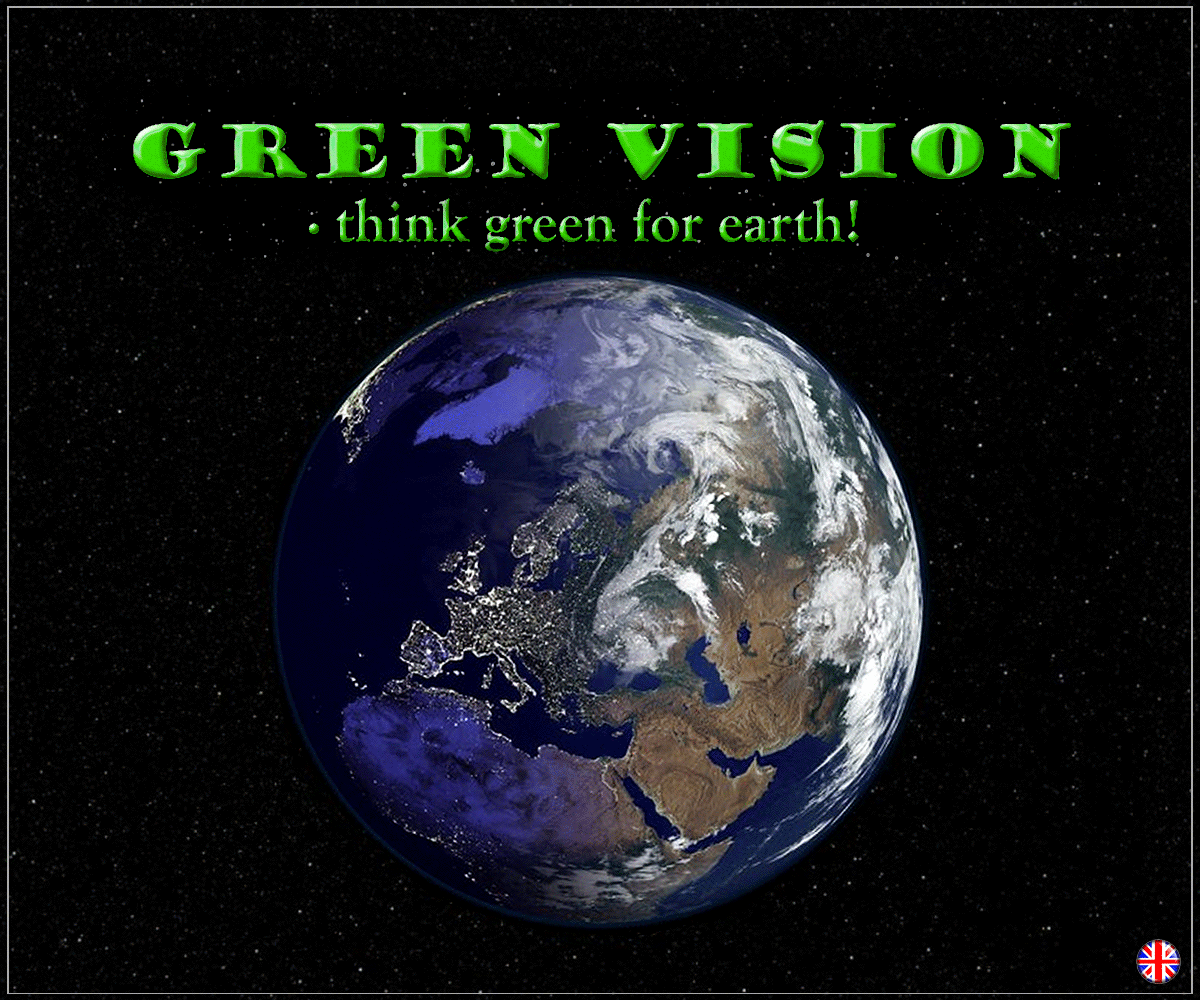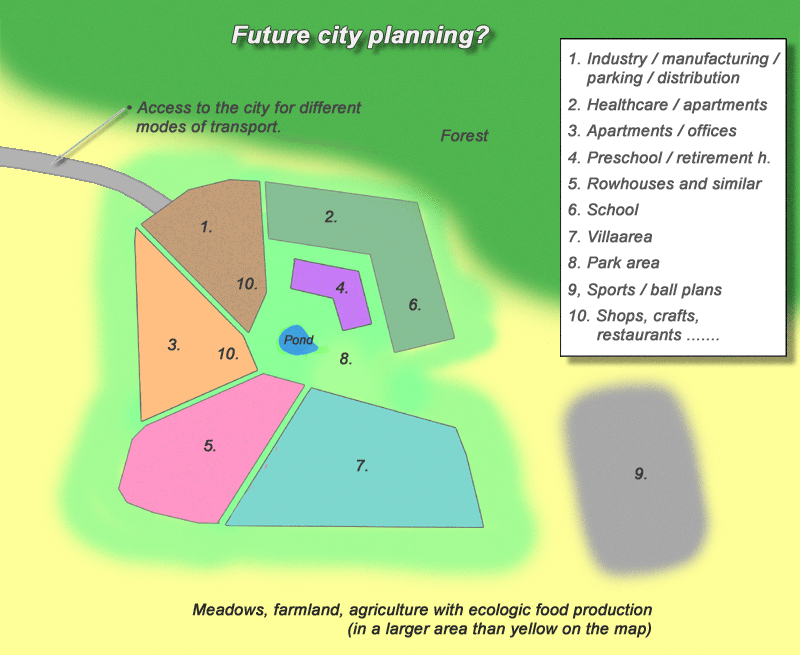
Mankind and environment • What can we do? • What if! • Green city plan • Send message

| |
|
Content:
Here and now •
Cosmos, earth and air •
Water - salt and fresh •
Ecosystems and biodiversity • Mankind and environment • What can we do? • What if! • Green city plan • Send message |
|
| Green suggestions! | How to do and why! |
| • Consume less meat. | Meat production is a huge waste of resources and is not environmentally sustainable. The amount of meat we eat nowadays makes many people sick. Keep in mind, if you choose non-ecological meat, it is more resource intensive because chemical fertilizer is produced using fossil fuels. It is also about the animal's living conditions. Vegetarian food is a smart choice. |
| • Choose organic food. | To choose ecological and / or locally produced food and other products contributes to saved resources and a better environment. That the ekological food is more healthy and usually tastes better, is no disadvantage. |
| • Save water and electricity. | Not wasting resources is always positive. Save hot water by bathing more rarely and / or take the shower more smart. Turn off the water while shampooing your hair and body. Lower the indoor temperature. It is important to have environmental thinking in all situations. |
| • Minimize the garbage. | Get a compost if you do not already have one. There you can throw everything biodegradable; inedible junk from fruit & vegetables, meat or fish residue from cooking, coffee grounds and so on. But not food. No food should be thrown because it has gone bad. Most of us have freezers and the grocery store so close that fresh food does not need to get bad. Is there a risk anyway? Make something yummy and freeze it. Also, keep in mind that medicines are not to be thrown into the garbage. Leave them at the pharmacy. |
| • Things and stuff. | Things that are workable but too hard to sell - leave to second hand or the like. If stuff is broken, try to fix before you leaves for recycling. Many times it's simple faults. |
| • Stress less. | Plan your cases and goals. Make at least two cases at the same time. With a little planning, no matter or problem needs to be solved directly or spontaneously. The positive is that you will got time left. Even the environment will be happy. |
| • Small cases or purchases. | Why not make small purchases or other errands on foot or by bicycle. You get a nice daily exercise at the same time. Just put on the backpack! |
| • Take a car free day. | Leave the car at least one day a week. Go by public transport or by bicycle. Cycling with others to work just gets more popular. |
| • Skip the gym. | Do your physical training alone or in groups in your home environment and save some time. Add some workout in front of the TV, for example. What could be more wrong than taking the car to the gym? |
What if!• Ecological products must always be cheaper than non ecological. Why are ecologic products more expensive? They should always be cheaper than products which harm the environment more and is bad for our health. Change must take place. Maybe with new legal requirements if needed. • Contributions for driving to work are outdated. Much car driving should be charged. Why are long work journeys subsidized? Because of the environment, we should drive our car less. Long trips and a lot of driving need to cost more. Maybe you can get a job closer to home. Replace subsidies for a fee. Go by car is a lot about time and money. What average speed can you go with in queues, roundabouts and over speedbumps? How much time do you spend on and in the car? A big item is the costs, personal and for society, direct and indirect for injuries, invalidity and death. What is the real cost of cars and traffic? Fact: The average distance for a swedish car over a year is a little more than 12000 kilometres. This means, in just over three years the car has completed a distance which corresponds to a lap around the globe. Often only in the neighborhood and often only with the driver in the car. Could it make sense? • Let all modes of transport have the same conditions. Emissions from the swedes air travel are now about the same amount as from all Sweden's cars. From 1 April we have a flight tax of 60-400 SEK on trips starting in Sweden. Read the law (in swedish): Lag (2017:1200) om skatt på flygresor. But why should airlines and ships benefit from tax exemption from energy and carbon dioxide and not have the same taxes on fuel as our cars? It is currently about 60% of the price. The electricity, even to our homes, include these taxes. Fact: In an international agreement of 1944 (with how much environmental concern at that time?) it was decided that flights should be promoted and therefore excluded from fuel or carbon dioxide taxes. The new tax is one step in the right direction. But more needs to be done to get the environmentally friendly train competitive. Still, the environment is paying too much of the airline's emissions. Let's show the way with a responsible environmental thinking by letting nationally flights pay energy and carbon tax. Others will follow and in the future, international flights will also pay their costs. • New city planning with environmental focus (image below). Almost all cities and villages have lots of asphalted areas for traffic. Roads, intersections and parking spaces should not be in a modern green urban environment. The future city's main vehicle is bicycle. In our future city, all transports will be transported to the city´s distribution center on the outskirts of the city. Nearby there is a parking space for your own vehicle, a bus terminal etc, maybe underground. From there goods are environmentally friendly transported by electric vehicle or bicycle, to shops, offices, homes etc. All your own transport of goods or things in the city is done by foot or by bicycle. Package bicycle is available for free. Bigger transport you can order from the distribution center. Perhaps to the central garage on the outskirts of the city for further transport with own vehicle. A number of free transports to and from home per year would be reasonable. • Note that the color fields for properties describe approximate areas for houses and are therefore no house bodies! 
In the ideal city, as we see it, you walk or bicycle to work, kindergarten, school, shops, health care, recreation in nature and so on. Close to most things can not be much greener. In the urban environment there should be no way for vehicles, just for walking and cycling. Therefore, children can go to school on their own without the risk of accidents. Around the city there must be a "ring road" for ambulance and rescue services which also can be used for transportation of goods and things. Perhaps transports can also be done underground in culverts. |
Do you have any thoughts about this site?
|